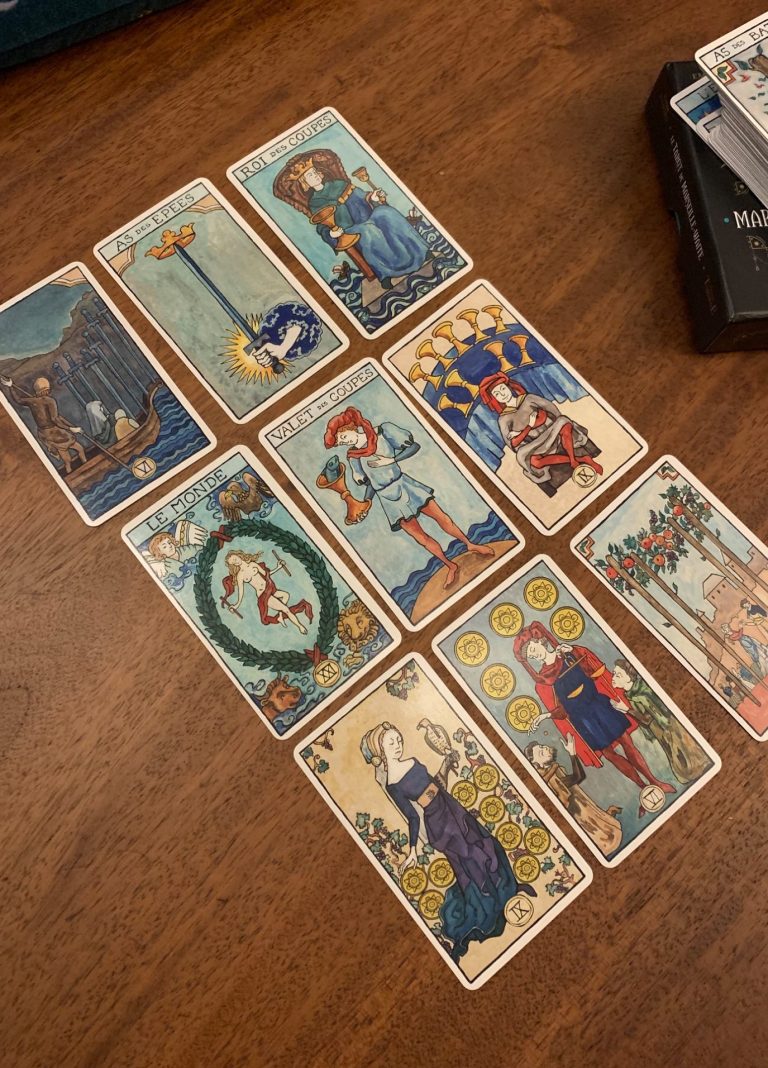Divination and tarot
The Art of Divination and the Mysteries of Tarot
Unveiling the Secrets of the Ancient Practices
Introduction to Divination
Divination, an ancient practice, has captivated humanity for centuries with its promise of revealing hidden knowledge and insights about the future. From the mysterious oracles of ancient Greece to the mystical shamans of indigenous cultures, divination has taken many forms and has been an integral part of spiritual and cultural practices worldwide. At its core, divination is the attempt to gain insight into a question or situation by interpreting omens, signs and symbols.
Historical Context
The roots of divination can be traced back to early civilizations where it was often intertwined with religion and spirituality. The ancient Egyptians, for instance, used dream interpretation and consulted oracles to make important decisions. In China, the I Ching, or Book of Changes, was used as a divinatory text to guide actions and predict outcomes. Similarly, the ancient Greeks revered the Oracle of Delphi, where priestesses interpreted the will of the gods.
Common Methods of Divination
Over the ages, various methods of divination have emerged, each with its own unique tools and techniques. Some of the most well-known methods include:
- Astrology: The study of celestial bodies and their influence on human affairs.
- Runes: The use of ancient alphabetic symbols to gain insight and guidance.
- I Ching: An ancient Chinese divination text used to guide decision-making.
- Crystal Gazing: The practice of looking into a crystal ball to foresee future events.
- Palmistry: The interpretation of the lines and features of the hands.
- Tarot Cards: A deck of cards used to gain insight into the past, present, and future.
Tarot: A Deeper Dive
Among the myriad methods of divination, tarot has gained significant popularity and intrigue. With its rich symbolism and deep psychological insights, tarot offers a unique window into the subconscious mind.
The History of Tarot
The origins of tarot are shrouded in mystery. While some believe that tarot cards originated in ancient Egypt or India, historical evidence points to their emergence in 15th-century Europe as playing cards. Tarot and many card ‘games’ were used for divination, either directly or by ‘story telling’. The tarot deck, known as the Tarot de Marseille, became a tool for fortune-tellers and mystics and was the main source of tarot until the Rider-Waite-Smith and the Thoth Tarot in the early 20th century.
The Structure of a Tarot Deck
A standard tarot deck consists of 78 cards, divided into two main sections:
- The Major Arcana: Comprising 22 cards, each representing significant life events or spiritual lessons. Some of the most recognizable cards include The Fool, The Magician, The High Priestess, and The World.
- The Minor Arcana: Consisting of 56 cards, divided into four suits: Wands, Cups, Swords, and Pentacles. Each suit represents different aspects of life, such as creativity, emotions, intellect, and material concerns. The Minor Arcana also includes court cards: Page, Knight, Queen, and King.
How Tarot Readings Work
A tarot reading typically involves a querent (the person seeking answers) and a reader (the person interpreting the cards). The process begins with the querent focusing on a question or area of life they seek insight into. The reader then shuffles the deck and lays out the cards in a specific pattern, known as a spread. Each position in the spread has a particular meaning and helps interpret the cards in relation to the querent's question.
Common Tarot Spreads
Different spreads are used depending on the nature of the question and the depth of insight required. Some common spreads include:
- The Three-Card Spread: Used for simple questions or quick insights, it involves drawing three cards representing the past, present, and future.
- The Celtic Cross Spread: A more complex spread used for in-depth readings, it consists of ten cards, each with a specific position and meaning.
- The Relationship Spread: Designed to provide insights into relationships, it involves drawing cards that represent the querent, their partner, and the dynamics between them.
- The 9 card tableaux – this is my favourite and it does everything.
The Interpretive Art of Tarot
Interpreting tarot cards is an art, which everyone can learn. While the imagery and symbolism on each card provide clues, the reader's intuition plays a crucial role in delivering meaningful insights. The same card can have different meanings depending on its position in the spread and the surrounding cards. For example, The Tower card, often associated with sudden change or upheaval, might signify a necessary transformation when paired with The Star, a card of hope and renewal.
Psychological and Therapeutic Aspects
Beyond its mystical allure, tarot can also be viewed through a psychological lens. Many modern practitioners use tarot as a tool for self-reflection and personal growth. The cards serve as mirrors to the subconscious, helping individuals explore their inner landscapes, confront fears, and gain clarity on their emotions and motivations. In this way, tarot can be a valuable aid in therapeutic settings, offering a unique approach to understanding oneself.
Divination, with its rich history and diverse methods, continues to fascinate and inspire those seeking to understand the mysteries of existence. Among these methods, tarot stands out for its profound symbolism and psychological depth. Whether viewed as a mystical practice or a tool for self-discovery, tarot offers a compelling journey into the unknown, inviting us to explore the hidden realms of our psyche and the universe.

APRIL 2025
© Copyright. All rights reserved.
We need your consent to load the translations
We use a third-party service to translate the website content that may collect data about your activity. Please review the details in the privacy policy and accept the service to view the translations.
